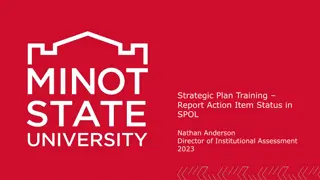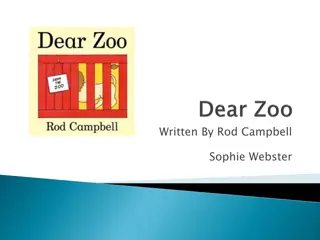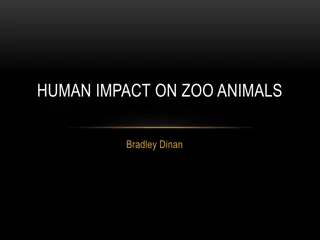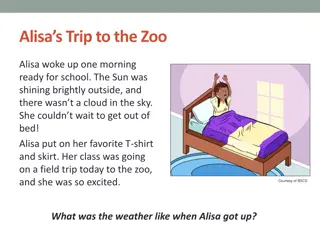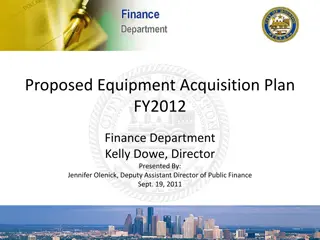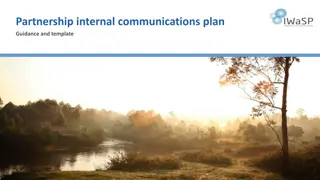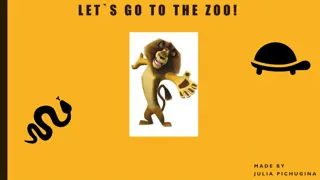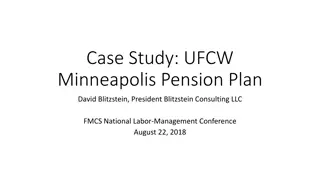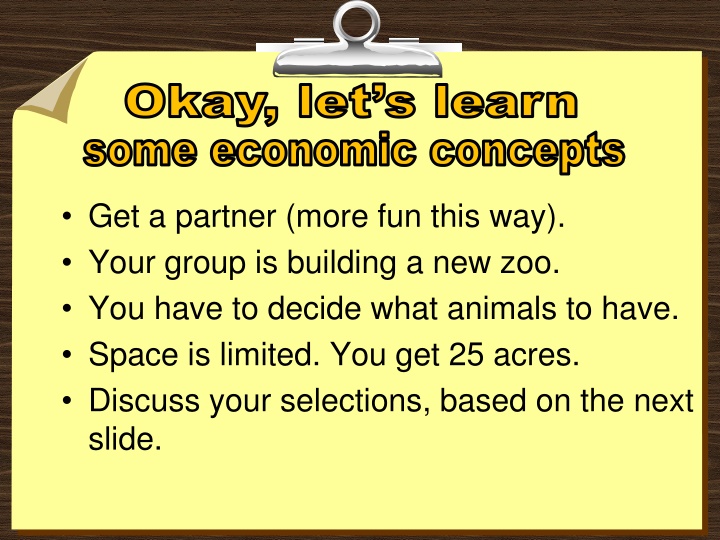
Deciding the Animal Selection for a New Zoo - Fun Economic Concepts
In this interactive activity, a group must decide which animals to include in a new zoo with limited space of 25 acres. By making choices based on the acreage each animal requires and considering concepts like scarcity, opportunity cost, and marginal analysis, participants learn important economic principles in a fun and engaging way. The exercise prompts critical thinking about the trade-offs involved in resource allocation and the balance between individual and social benefits.
Uploaded on | 3 Views
Download Presentation

Please find below an Image/Link to download the presentation.
The content on the website is provided AS IS for your information and personal use only. It may not be sold, licensed, or shared on other websites without obtaining consent from the author. If you encounter any issues during the download, it is possible that the publisher has removed the file from their server.
You are allowed to download the files provided on this website for personal or commercial use, subject to the condition that they are used lawfully. All files are the property of their respective owners.
The content on the website is provided AS IS for your information and personal use only. It may not be sold, licensed, or shared on other websites without obtaining consent from the author.
E N D
Presentation Transcript
Okay, lets learn some economic concepts Get a partner (more fun this way). Your group is building a new zoo. You have to decide what animals to have. Space is limited. You get 25 acres. Discuss your selections, based on the next slide.
Zoo Choices 25 acres total! Lion - 2 acres Turkey - 1/10 acre Giraffe -1 acre Seal - 1/2 acre Camel - 1/2 acre Cheetah - 1 acre Cow - 1/3 acre Monkey - 1/2 acre Food court 2 acres *Numbers are acres required for ONE animal (hint:they don t like being alone!) [If you had 2 of each, it would take over 34 acres so you will have to make choices.] Asian Elephant 1.5 acre African Elephant - 1 acres Reptile House - 5 acres Hammerhead Shark - 1/2 acre Kangaroo - 1/2 acre Tiger - 1 acre Whale - 3 acres House of Birds - 5 acres
25 ACRES Lion - 2 acres; Turkey - 1/10 acre; Giraffe -1 acre; Seal - 1/2 acre; Camel - 1/2 acre; Cheetah - 1 acre; Cow - 1/3 acre; Monkey - 1/2 acre; Asian Elephant 1.5 acre; African Elephant - 1 acres; Reptile House - 5 acres; Hammerhead Shark - acre; Kangaroo - 1/2 acre; Tiger - 1 acre; Whales - 3 acres; House of Birds - 5 acres. *Numbers are acres required for ONE animal (hint: they don t like being alone!) [If you had 2 of each, it would take over 34 acres so you will have to make choices.]
25 ACRES Two monkeys To get you started here are some examples of what you might do! This would have taken care of 7 of the 25 acres. 18 more to go! Two African elephants Two camels Remember that 2 of each helps future zoo stock. Two tigers Two seals
Questions 1. Why didn't your group put two of every animal in the zoo? Scarcity of land 2. We had a TINSTAAFL problem. What s that? Stands for There is no such . If we wanted more of one animal we had to give up more of another animal. 3. Why didn't your group put a turkey in your zoo? Benefits vs. costs (turkeys are common; not too scarce) 4. Why didn't your group have a zoo with only monkeys? Diminishing (less) marginal (extra) utility (satisfaction) 5. Why did your group choose an African elephant and not an Asian elephant? Benefits vs. costs (the African elephant takes less land)
Questions (cont.) 6. What was the last animal to make it in your zoo? Marginal Analysis 7. What was the animal that just missed out on your zoo? That animal is the opportunity cost ( opportunity lost ) 8. What animal did everyone in your group agree to include ___? 9. Would everyone in your group have made the same choices if they did the zoo alone? Individual benefits vs. social benefits
Questions for thought Give a quick response for each question, 10-12. 10. What is the cost of staying in school? 11. Why do some students choose to drop out of school? 12. Why do most students choose to stay in high school and graduate?
Conclusions We wanta lot of things, but we are limitedin our resources. So, Economics is all about making choices.

